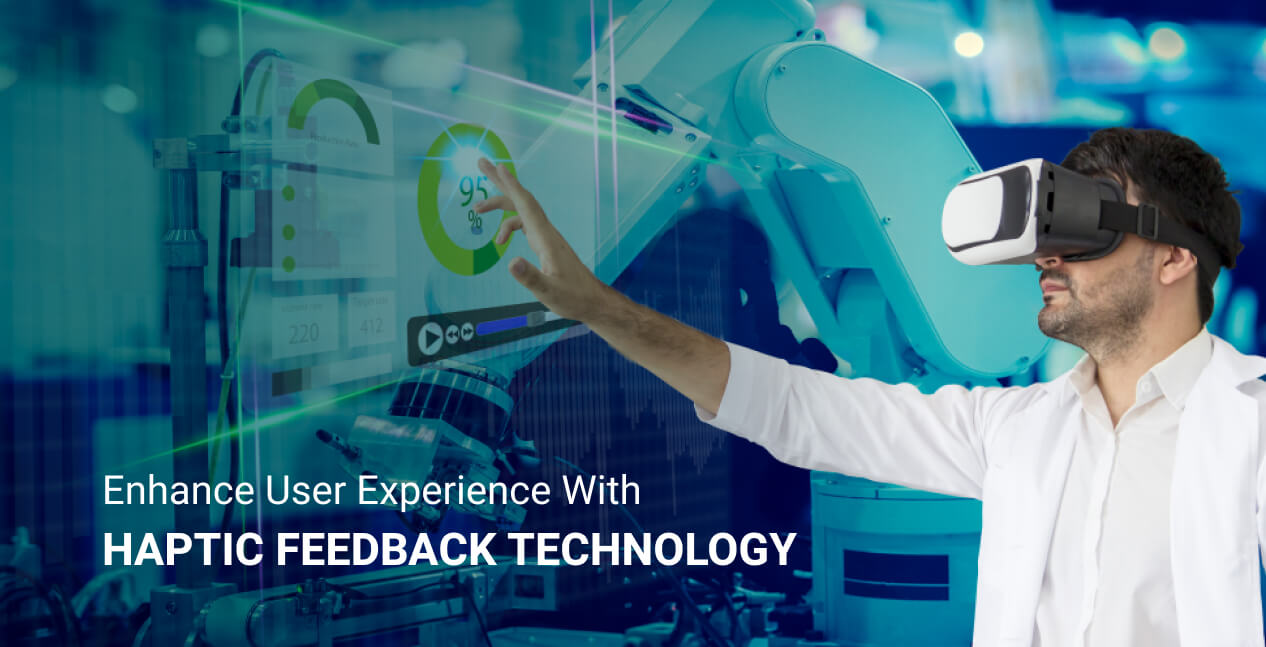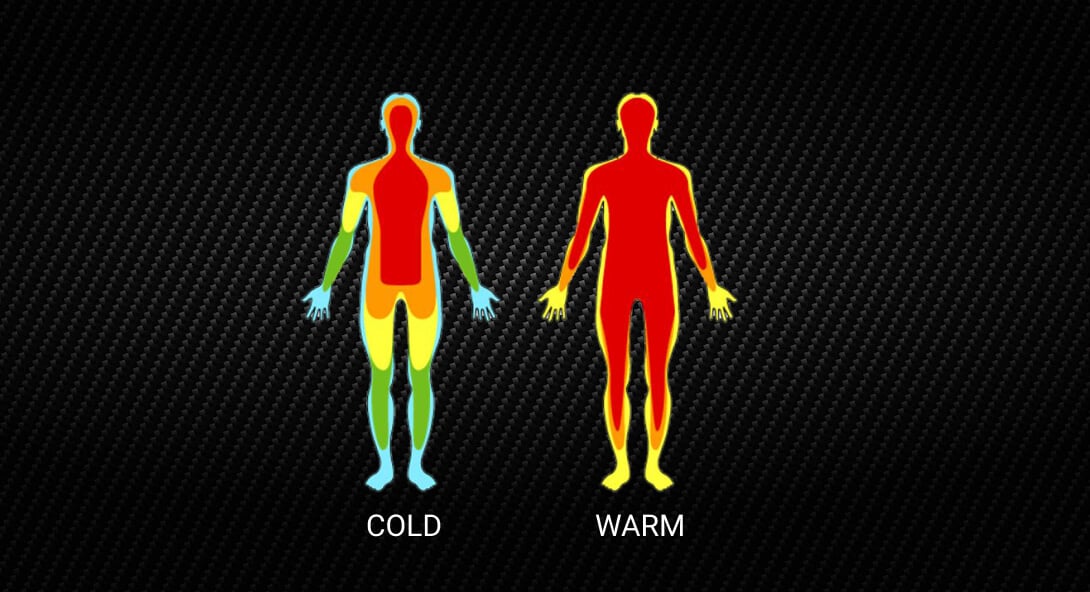Haptic feedback has a significant impact on user experience. Nowadays, user experience is more about the imagination than the experience. Not to worry, haptic feedback technology provides more connected experiences in a virtual environment via feelings, vibrations, or by making use of tactile sensations. This technology has the potential to be beneficial to a variety of businesses in the future.
The emotional aspect of touch is crucial for marketing purposes. Also, incorporating haptic feedback has been shown to increase client engagement significantly. Haptic feedback has a broader scope that works on the tactile senses of humans. The technology is not the first but has a more personalized experience using tactile feedback technology. Let’s dive in to learn more about haptic feedback technology and its technology trends 2022.
What is haptic feedback?
With technology like haptic feedback, you can acquire tactile information through various gestures, including feelings, vibrations, touch, etc. Any tactile feedback, such as air pressure or sound waves, is included in haptic science. Most electronics that use vibration to provide haptic feedback use an eccentric rotating mass (ERM) actuator, which consists of an unbalanced weight tethered to a motor shaft. Upon rotating the shafts, the spinning causes the actuator and attached device to shake. Additionally used to create vibrations, piezoelectric actuators provide even more accurate motion than LRAs, with less noise and a smaller platform. However, they require greater voltages than ERMs and LRAs do.
There are two main categories of haptic feedback tactile and kinesthetic. The most prevalent haptic feedback is tactile, which describes the vibrations and friction in mobile devices. Kinesthetic haptic feedback refers to sudden physical cues that shift a user’s body’s posture, like when a car seat in an arcade game shakes or rumbles as the player navigates a virtual route.
When you talk about Haptic technology, you will find similar terms such as Haptic technology, haptic feedback, and Haptics. Here the term “haptic technology” describes technological applications that provide tactile stimulations, and it can be both virtual or physical.
Haptic feedback includes the techniques used by haptic technology to transmit tactile information to consumers. Haptics is a general term that covers controlled vibrations at set frequencies and intervals to provide a sensation representative of in-game action. It can do ‘bumps’ and ‘knocks’ and ‘tap’ your hand or fingers and lots of other stuff, as well as rumble.
Types of haptic feedback
The types of haptic technologies are as below:
Force feedback
As it was created first, force feedback haptic technology is the most researched and well-maintained type. Force feedback stimulates the ligaments and muscles through the skin into the musculoskeletal system. Whereas other Haptics affect the top layer, that is, the skin.
The devices stimulating the skin or the top layer are minor and affect smaller areas. In comparison, the force feedback devices are much larger and affect a larger part of the body.
Generally, there are two types of force feedback: biomimetic and non-biomimetic devices. That helps move the human limbs and resembles them by their forms, known as biomimetics. These devices are expected to have the human body’s functionality and be suitable for all bodies. Non-biomimetic devices are to be different from humans.
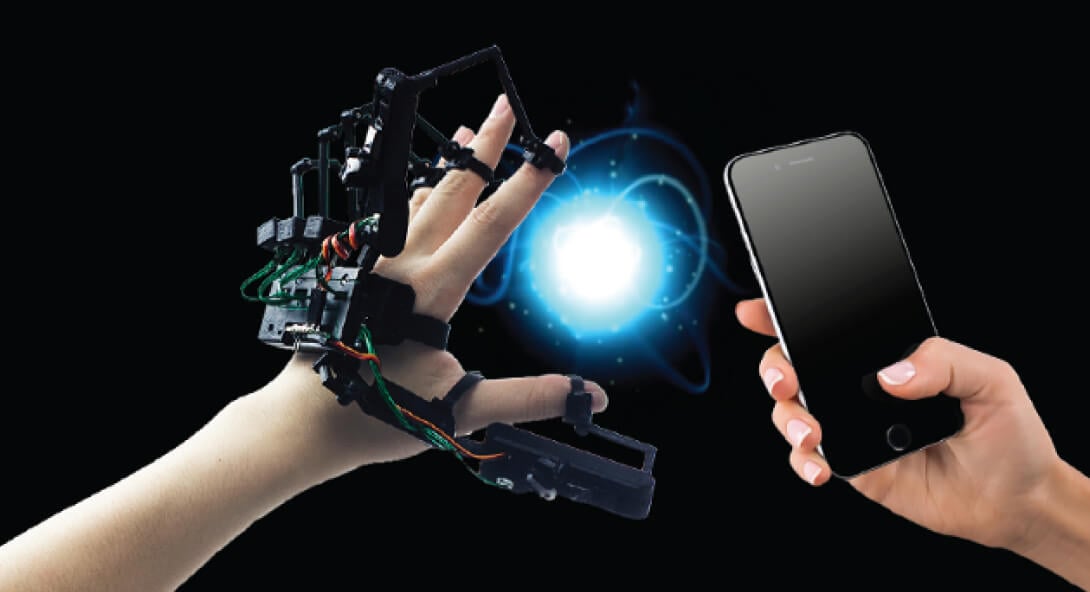
Vibrotactile feedback
An oscillating, reciprocating, other periodic motion of a rigid or elastic substance that is moved from a position or condition of equilibrium is referred to as a vibration. Vibration replicates the skin in vibrotactile feedback, which communicates with the user. The most common type of haptic vibrotactile feedback is when mobile phones or tablets vibrate as users interact with the touchscreen to simulate a physical button input.
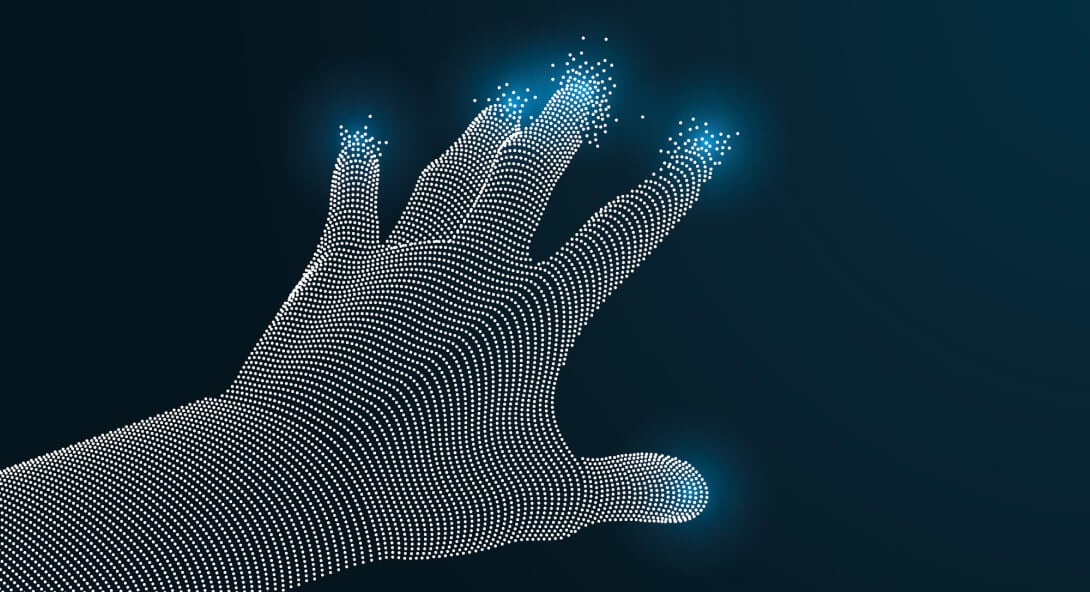
Electrotactile feedback
The receptors and nerve endings are both impacted by this haptic technology. Here, electric impulses allow users to experience various experiences that no other system can replicate. It uses an electrical current to stimulate the skin nerves via electrodes placed on the skin’s surface. It affects the receptors and the nerve ending with electrical impulses. Depending on the strength and frequency of the stimulus applied to the wearer’s skin, this feedback takes on various shapes.
In electro tactile, there are two different types of electrostimulation devices. Examples include electrical muscle stimulation and transcutaneous electrical neural (or nerve) stimulation (TENS) (EMS). The benefit of an electro-tactile feedback system over a vibrotactile or force feedback system is that it lacks mechanical or moving components.
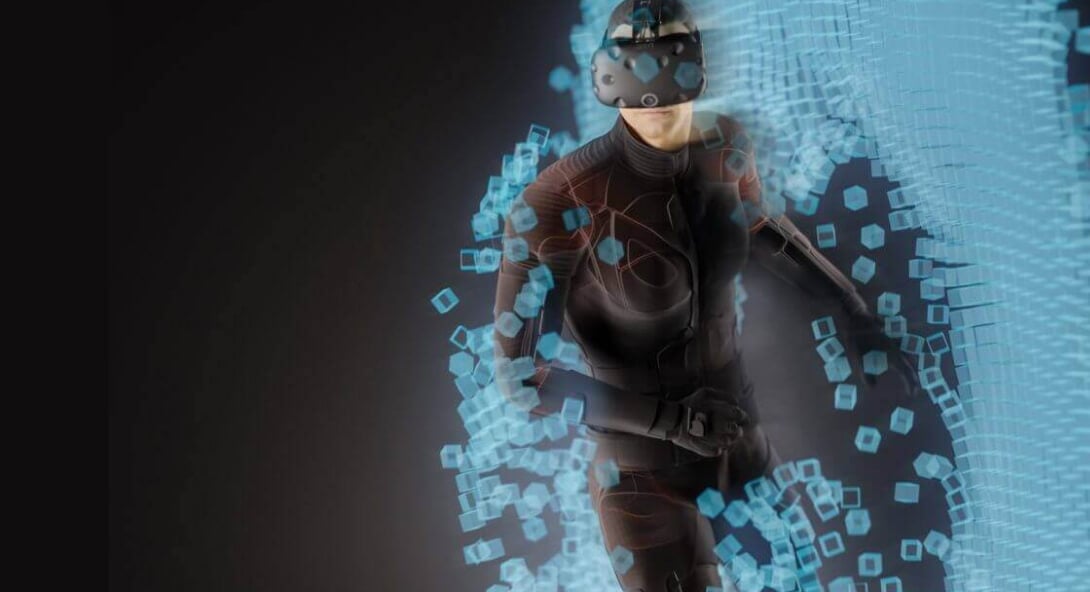
Ultrasound tactile feedback
Ultrasound tactile feedback works on the sound wave of high frequency. This feedback uses high-frequency sound waves to stimulate the sensations within the environment. A haptic field creates sensations and aware people passing by the field. The principle is known as acoustic time reversal.
In order to create a more prominent effect, a feedback field needs to be created, as a single emitter would not work. These ultrasound waves create an intangible field humans can feel through their skin. The main advantage of this type of Haptic technique is that it does not require any gadget or device to be worn.
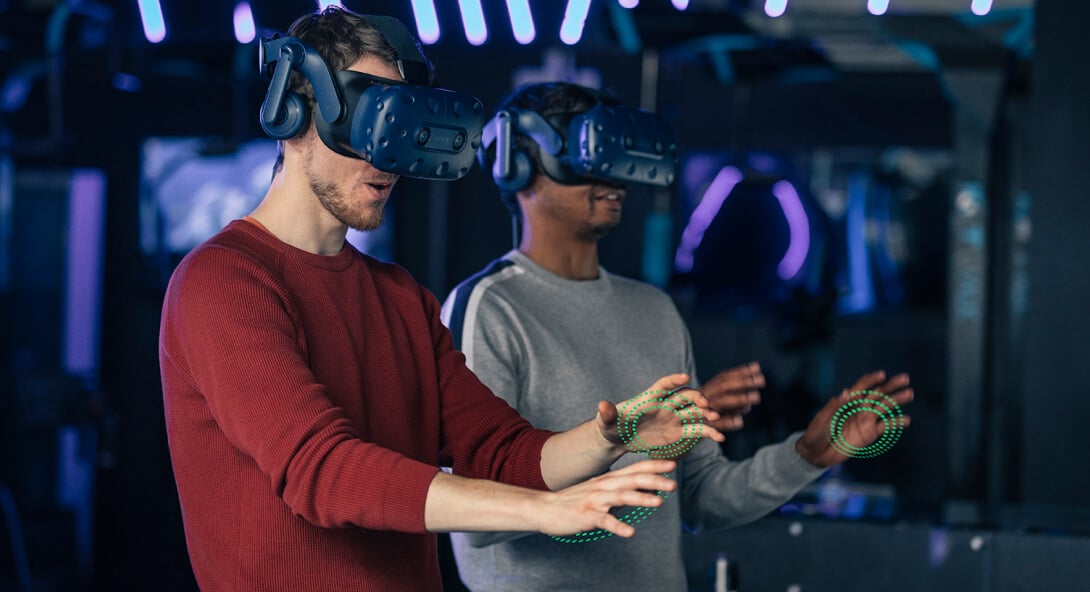
Thermal feedback
Here the thermoelectric diodes are used to implement thermal feedback, which is placed in direct contact with the skin. Such haptic technology functions by fusing appropriate physical experiences with software changes.
It’s significant to highlight that, in contrast to tactile communication, people struggle to describe the location of heat stimuli. As a result, many actuators don’t need to produce heat or cold feedback and can be placed farther apart. So in a way, designing thermal feedback devices is even simpler.
Haptic feedback Process
Haptic feedback technology uses motors, stimulators, sensors, and more to create Haptic feedback. This user experience is provided using skin indentation devices, exoskeleton devices, or vibrotactile technology.
A range of skin indentation devices or wearables is available in haptic technology, such as haptic gloves containing skin indentation devices. In order to simulate the sense of touching or manipulating an object, these systems press the skin.
Exoskeleton devices are used in games with active force feedback to provide a personalized user experience. These gadgets use electromechanical motors to target particular body areas and link them to a gaming experience.
Vibrotactile technology is majorly used in VR devices. Piezoelectric and linear resonant actuators use haptic devices with vibrotactile technology to produce rumbling, shaking, and vibrating patterns. In this manner, all haptic technologies provide the best user experience using various haptic technology and devices.
Why use haptic feedback?
With the rise in applications, it has become more critical to provide a great user experience to stand out from the rest. Both the Google Play Store and the Apple Store have ample applications. The competition has made it essential to use the newest technology to amaze or attract users. Thus, in Mobile application development, developers must include new features which will take the application to the next level.
In light of this, the emergence of haptic technology in general and haptic feedback, in particular, holds out the possibility of giving app developers additional tools to improve mobile experiences. Whether your business already has an app or is considering creating one, one should consider including haptic feedback.
Applications of Haptic Feedback
By now, you might have figured out how Haptic feedback helps in competitive times and how it will help you provide the best user experience. All industries can take advantage of this technology and include it in their application development. To name a few industries, here are some:
Medical industry
The medical field is one of the most significant industries and one that can benefit the most from haptic feedback technology. It helps in conducting significant surgeries. The most used case is the laparoscopy instrument using force feedback to check whether the tissues are working normally or are there any abnormalities.
Computers and mobile devices
Incorporating Haptics in computers and mobile applications helps provide the best User experiences. It helps establish features such as Force Touch and 3D Touch features. Apple products are examples of the latest Haptics technologies.
Gaming industry
Gaming is the field that has the most extensive application scope for Haptic technology. Mostly all new technologies are first tested in the gaming industry. The gaming industry gives a maximum chance of improvement. The inclusion of high-quality haptics components, which can elicit the renowned “wow effect” in users of any age, has also contributed to the dramatic expansion of the number of immersive interactive attractions that populate malls and theme parks.
Automotive and aviation
Both the cars and the aircraft have multiple uses when it comes to Haptics implementation. The technology can be used in cars for signals, warnings, communication, and other data. For aircraft, it is mostly similar to providing various instructions to the pilot. In both cases, the Haptics actuators can be installed on different components of cars or aircraft, which provides instructions to the drivers and pilots.
Used Cases of Haptics
The Sunu Band
This Band is a smartwatch that provides the user with time-of-day updates, especially for those who are sensory impaired. The Band claims to work as efficiently as a human eye and works on a rechargeable battery as other wristbands. Further exploring its capabilities reveals that the bracelet uses sonar technology to give the user haptic input, vibrating more strongly as they come closer to an object.
A Haptic Actuator
Haptic feedback is used by medical practitioners both during surgical procedures and during training exercises to improve surgical techniques and conduct them with great efficiency. It is believed that minimum invasion in medical providers helps heal the human body faster, and patients suffer less. Robotics technology, nevertheless, brings this to an end. Robotics haven’t been able to give the surgeon haptic feedback until now. However, an 18-year-old Simone Braunstein has done it. She writes that 652,000 minimally invasive robotic procedures were performed in 2015 without patients being touched.
Breathe for Apple Watch
Breathe by Apple watch helped remind people to take some time out and relax and rejuvenate. This is a feature that is now found in almost all digital watches. The watch signals you by vibrating your wrist using haptic technology to alert you that it is time to unwind. The watch lightly taps your wrist as you take slow breaths in and out to help you maintain the desired breathing rate.
Conclusion
Haptic technology is here to stay and will be incorporated in many ways. No matter what your next application is regarding, Hire App developers and take advantage of Haptics Feedback technology and help provide the best user experience to your end users. This cutting-edge technology can give users a better experience and increase their sense of connection to your products and brand.
Frequently Asked Questions
Why is haptic feedback important?
Haptic feedback is important to provide a great user experience. Haptic interfaces, on the other hand, are essential in training and other applications. This is due to the fact that the sense of touch delivers rich and comprehensive information about an object.
What is an example of haptic feedback?
The rumble in a game controller or the vibration in a mobile phone are likely the two most well-known haptics examples. There are many other uses of Haptics these days.
What are the 5 things we can sense through haptics?
Hot, cold, hard, soft, discomfort, itching, and more are senses that can be felt through haptics.
What is the future of haptic technology?
There are many ways haptic technology can be taken into use. Haptic feedback technology will help companies to provide more connected experiences in a virtual environment via feelings, vibrations, or by making use of tactile sensations. It will help to establish the best user experience.


